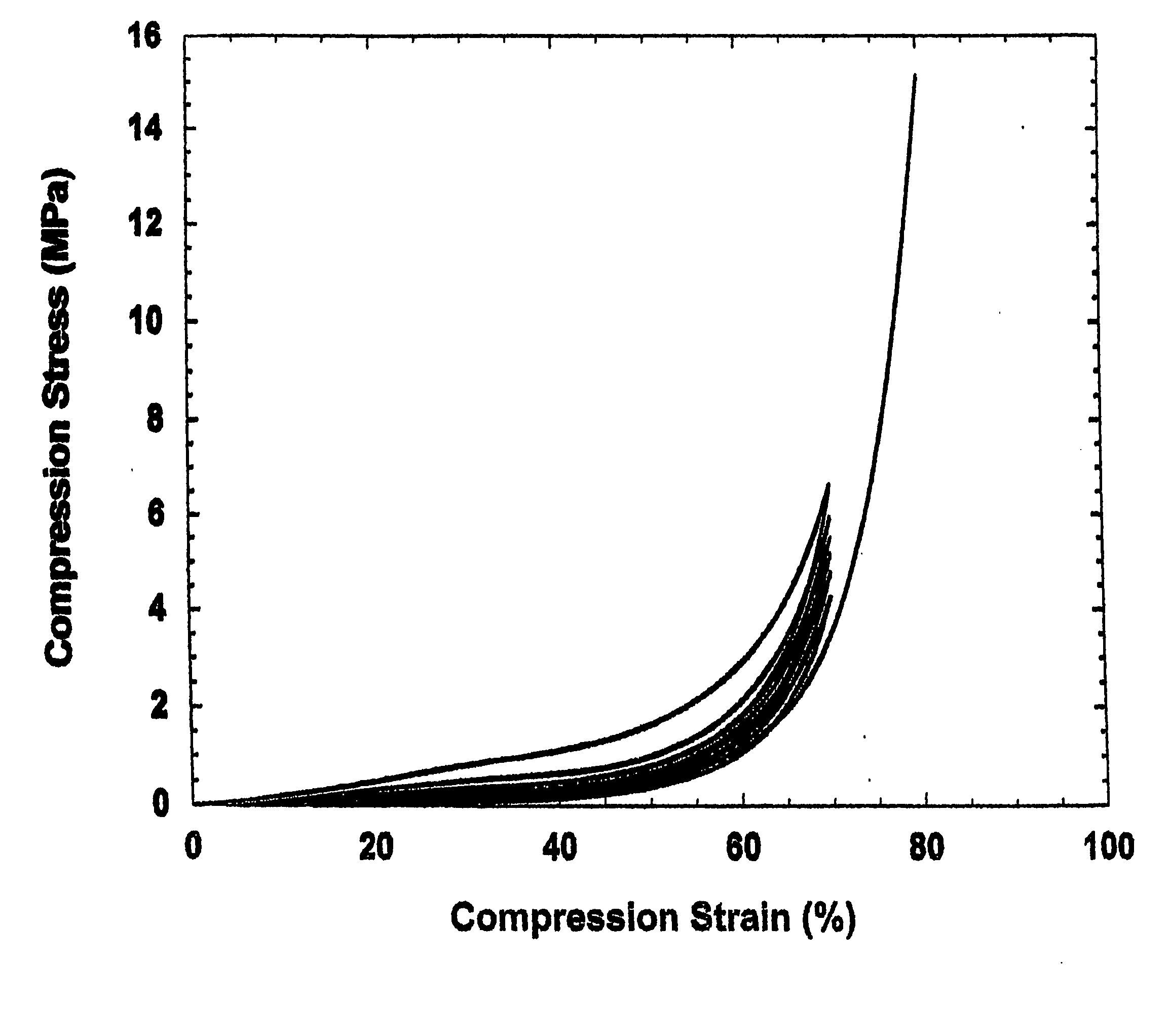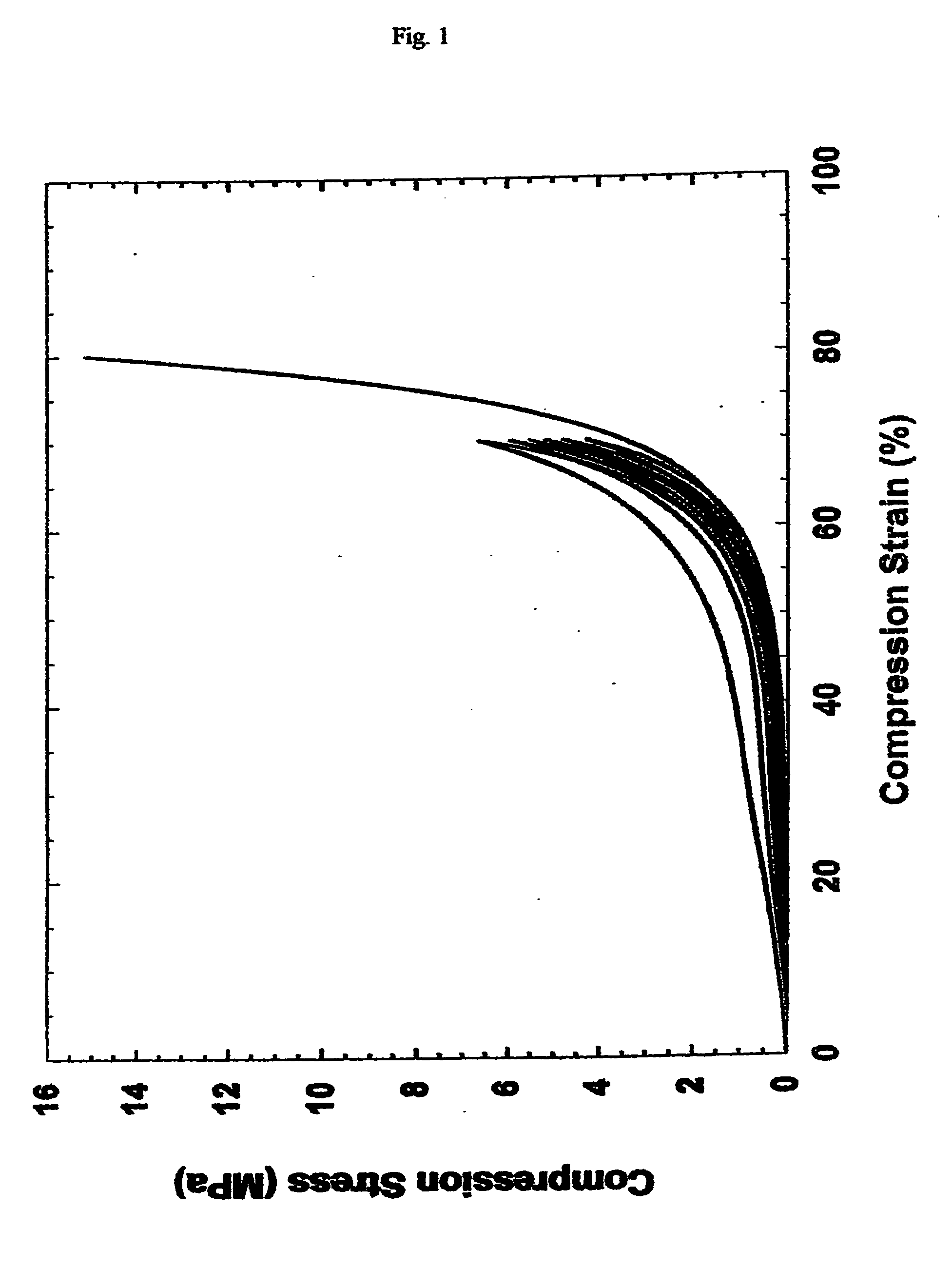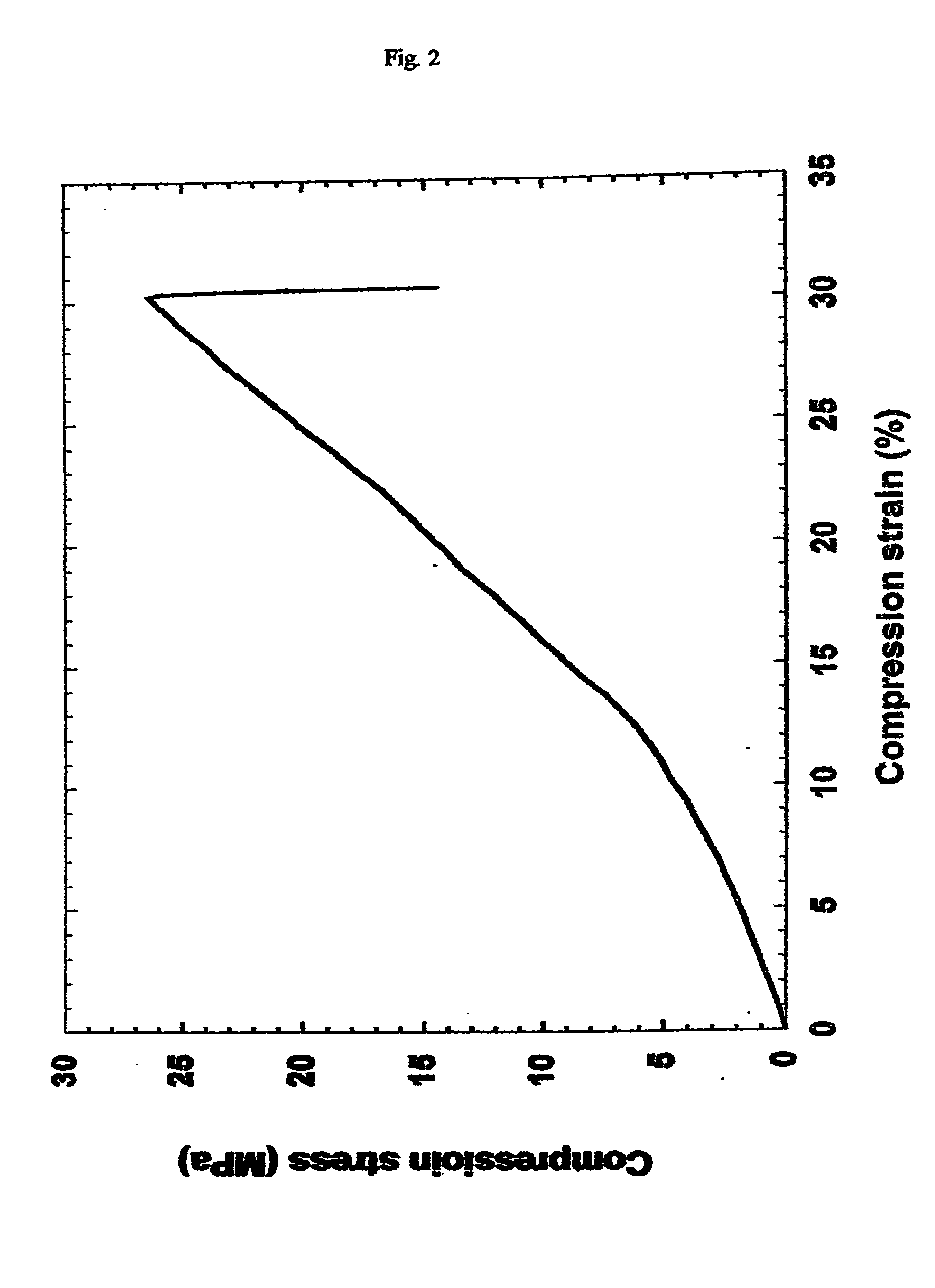Highly convertable endolumenal prostheses and methods of manufacture
a technology of endolumenal prostheses and conversion methods, applied in the field of medical devices, can solve the problems of inability to identify inflamed atherosclerosis plaques with coronary angiography, metal distortion and artifacts in mr images, and the association of plaque disruption with varying degrees
- Summary
- Abstract
- Description
- Claims
- Application Information
AI Technical Summary
Problems solved by technology
Method used
Image
Examples
example 1
[0071] 1) Synthesis: Elastic block copolymers were synthesized by polycondensation reaction between terephthalic acid, sebacic acid, and glycerol. The molar ratio of the two acids is 40:60 terephthalic: sebacic. Dimethyl terephthalate was synthesized by refluxing terephthalic acid in methanol in the presence of 5 mole % concentrated H2SO4 overnight. After solvent removal under vacuum, the crude product was purified by extraction and vacuum distillation, and stored anhydrously. Dry dimethyl terephthalate and anhydrous glycerol were heated at 150° C. in an inert atmosphere for 8 hours before sebacic acid was added. Catalytic amount of zinc acetate was added to the mixture, and it was heated for another 24 hours. The viscous liquid obtained was poured into a Teflon mold while still hot, transferred into a vacuum oven, and cured at 180° C., 50 mTorr for 12 h. The polymer [poly (glycerol sebacate-co-terephthalate)] film was cut into square prism of about 7×7×3 mm. Three specimens were mo...
example 2
[0073] A high-modulus elastomer was synthesized by polycondensation of equimolar amount of dimethyl terephthalate (see example 1) and glycerol. Anhydrous dimethyl terephthalate (5 g) and 2.37 g of anhydrous glycerol were heated at 150° C. in an inert atmosphere for 8 hours before catalytic amount of zinc acetate was added to the mixture. The reaction mixture was heated for another 12 hours. Alternatively, the polymer can be synthesized by polycondensation of terephthaloyl chloride or terephthalic acid with glycerol. The resulted polymer was poured into a Teflon mold, and transferred into a vacuum oven. The polymer was cured for 24 hours at 180 degrees C. and 50 mTorr. The cured polymer was cut into 5×5×3 mm blocks, and mounted on a mechanical analyzer. An unconstrained compression test was used to characterize the mechanical propertires of the polymer. The modulus is 115 Mpa, about 100 times higher than that of poly(glycerol sebacate), yet still elastic enough to withstand more than...
example 3
[0074] High molecular weight hyaluronic acid (HA, 1 g) was dissolved in Dl water (10 ml), 20 ml of 10% aqueous NHS ester activated PEG-methacrylate (MW 400) was added under constant stirring at room temperature. The solution was stirred for 6 hours. Byproducts and unreacted starting materials were removed by dialysis (MWCO: 1000). Water was removed from the purified product by lyophilization. Pegylated HA (500 mg) was dissolved in 10 ml distilled water, then 60 μl of 2% 2,2-dimethoxy-2-phenylacetophenone (initiator) in 1-vinyl-2-pyrrolidinone was added under stirring at room temperature. The mixture was exposed to 365 nm UV light for 20 min, and then water was removed by lyophilization. When the resulted polymer was exposed to an aqueous solution, it can swell up to 50 times, as determined by weight change. An endoprosthesis made of this material can be delivered to the treatment site, and expand in situ.
PUM
| Property | Measurement | Unit |
|---|---|---|
| transition temperature | aaaaa | aaaaa |
| transition temperature | aaaaa | aaaaa |
| transition temperature | aaaaa | aaaaa |
Abstract
Description
Claims
Application Information
 Login to View More
Login to View More - R&D
- Intellectual Property
- Life Sciences
- Materials
- Tech Scout
- Unparalleled Data Quality
- Higher Quality Content
- 60% Fewer Hallucinations
Browse by: Latest US Patents, China's latest patents, Technical Efficacy Thesaurus, Application Domain, Technology Topic, Popular Technical Reports.
© 2025 PatSnap. All rights reserved.Legal|Privacy policy|Modern Slavery Act Transparency Statement|Sitemap|About US| Contact US: help@patsnap.com



